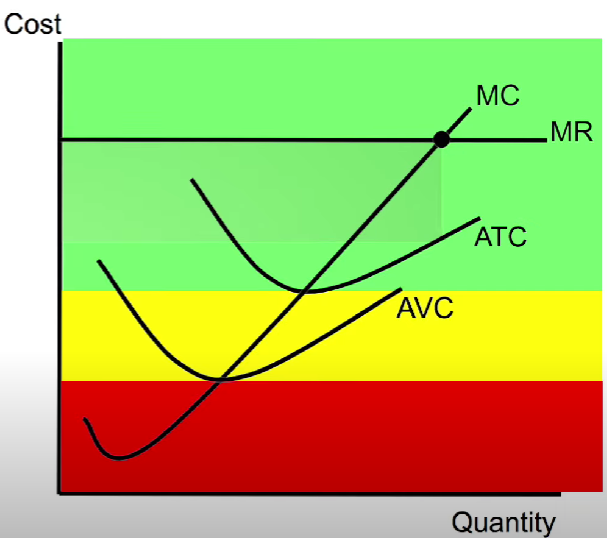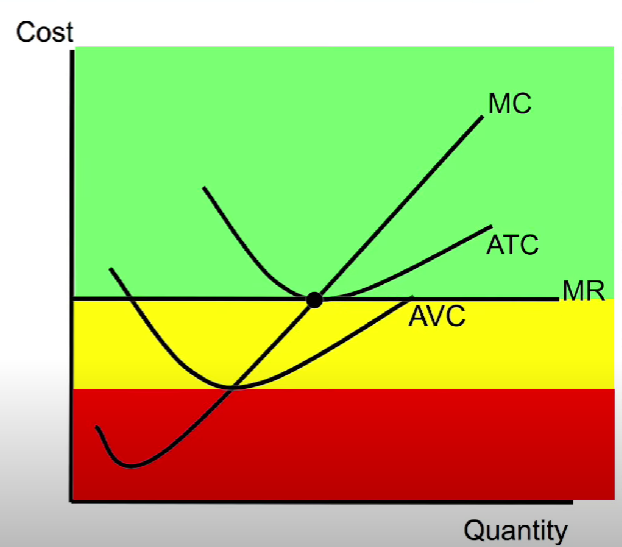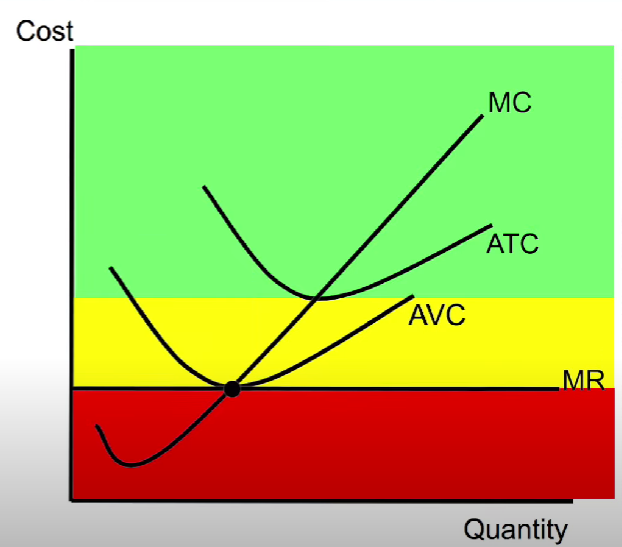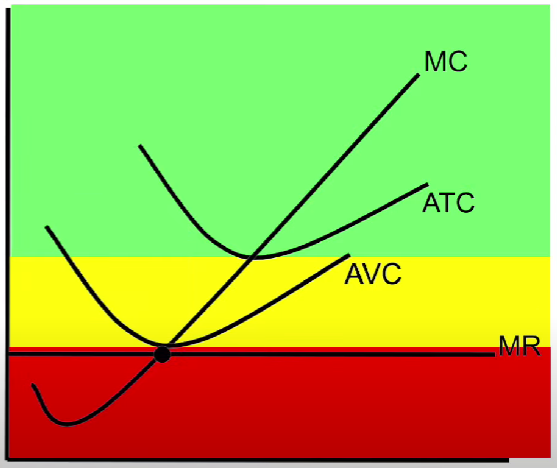We learnt in the previous lesson that to maximize profit; firms always try to produce at MR = MC. We will now see the relation of MR = MC with respect to other per units costs and how it affects decision making.
Let’s break it down step-by-step with clarity:
🔸 Case 1: MR (or P) cuts MC above or at ATC

-
This means the firm is earning more than its total cost per unit.
-
The firm is making economic profit.
✅ Result:
Highly profitable — the firm should definitely continue production.
🔹 Case 2: MR = MC at the Minimum Point of ATC

✅ What It Means:
-
The price (P = MR) is exactly equal to average total cost at the output level where MC = MR.
-
This is the break-even point.
📈 Visual Insight:
-
ATC is at its minimum (most efficient scale).
-
The firm is not making any economic profit, but also not incurring a loss.
✅ Result:
The firm earns zero economic profit (also called normal profit) and should continue operating.
🧠 Why?
-
All costs (both fixed and variable) are fully covered.
-
The firm is earning just enough to pay for its opportunity costs (implicit costs).
-
There is no incentive to exit or enter the market.
🔸 **Case 3: MR = MC at or above AVC, but below ATC

-
The firm cannot cover total cost (ATC), but it can cover variable cost (AVC).
-
It is making a loss, but not enough to justify shutting down.
-
This is called operating at a loss or minimizing losses.
✅ Result:
The firm should continue operating in the short run.
🧠 Why?
-
It is still covering variable costs and contributing something toward fixed costs.
-
Shutting down would mean a larger loss equal to the entire fixed cost (TFC).
📉 What happens over time?
-
If losses persist, some firms will exit the market.
-
Supply falls, which can raise the market price.
-
Eventually, MR (Price) may rise and shift to cut MC at ATC, restoring normal profit.
🔹 Case 4: MR = MC at the Minimum Point of AVC

✅ What It Means:
-
The price (P = MR) is just enough to cover average variable cost, and MC = MR occurs right at that point.
-
The firm is not covering any of its fixed costs — only its variable costs.
✅ Result:
This is the shutdown point. The firm is indifferent between producing and shutting down.
🧠 Why?
-
If the firm produces, it exactly covers its variable costs, but not fixed costs — so the loss equals TFC.
-
If it shuts down, it also loses the entire TFC — no gain or extra loss either way.
🔸 **Case 5: MR (or P) cuts MC at or below AVC

-
The firm cannot even cover variable costs.
-
Every unit produced increases total losses.
❌ Result:
The firm should shut down immediately, even in the short run.
✅ Conclusion
-
Condition A: MR = MC above ATC → Highly Profitable .
- Condition B: MR = MC at ATC minimum → Breakeven, neither profit, neither loss.
-
Condition C: MR = MC between AVC minimum and ATC minimum → Operate at a loss (short-run continuation).
-
Condition D: MR = MC at AVC minimum → Shutdown.
- Condition E: MR = MC below AVC → Immediate Shutdown .